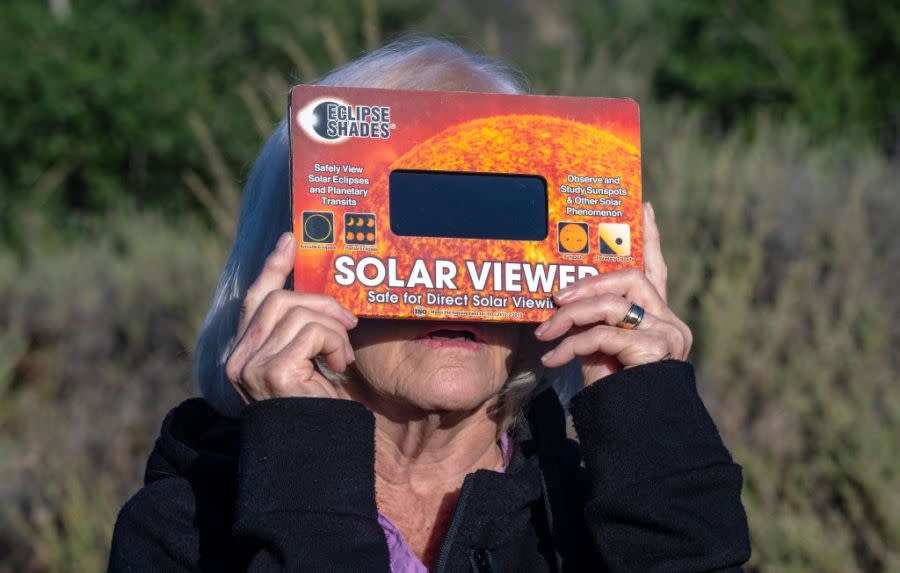What time will the solar eclipse happen in NYC?

NEW YORK (PIX11) – An extraordinary celestial event will happen in New York for the first time in nearly a century on Monday.
The state’s first total solar eclipse in 99 years is set to take place. If you miss it, you’ll have to wait 20 years for the next one in the United States.
Solar eclipse 2024: What each zodiac sign can expect
A total solar eclipse is when the moon lines up between the sun and the Earth, completely blocking the face of the sun and darkening the sky.
New York City isn’t in the path of totality, so it won’t experience a total solar eclipse. But the city will still see up to 90% of the sun covered, according to the American Museum of Natural History.

In New York City, the solar eclipse will begin at 2:10 p.m. and end at 4:36 p.m., with the peak of the eclipse happening at 3:25 p.m., according to the museum.
Although New York City won’t experience a total solar eclipse, other areas in the state will.
New York officials said the total solar eclipse can be seen in 29 counties in the western and northern parts of the state, including in Jamestown, Buffalo, Rochester, Syracuse, Watertown, Old Forge, Lake Placid and Plattsburgh. Locations in the path of totality could experience total darkness for up to four minutes, according to state officials.
If you plan to view the solar eclipse, you’ll need specialized eye protection to safely do so.

Looking at the sun during the solar eclipse without specialized protection, such as eclipse glasses or a handheld solar viewer, would be harmful to your eyes – except during the brief phase of the eclipse when the moon is completely blocking the sun, according to NASA.
“View the sun through eclipse glasses or a handheld solar viewer during the partial eclipse phases before and after totality. You can view the eclipse directly without proper eye protection only when the moon completely obscures the sun’s bright face,” NASA’s website says. “As soon as you see even a little bit of the bright sun reappear after totality, immediately put your eclipse glasses back on or use a handheld solar viewer to look at the sun.”
Regular sunglasses are not a safe alternative to eclipse glasses, NASA warned. Safe solar viewers “ought to comply with the ISO 12312-2 international standard,” according to NASA.
New York State officials also recommend using ISO 12312-2 certified eclipse glasses.
Solar eclipse viewing parties in New York City
Gov. Kathy Hochul launched a statewide effort to distribute limited-edition “I LOVE NY” eclipse glasses at 30 locations throughout the state, including Moynihan Train Hall in New York City and the Long Island Welcome Center in Dix Hills.
The glasses were approved by the New York State Department of Health and carry an ISO certification, according to officials.
For those unable to get a pair of the limited-edition glasses, New York state officials suggested visiting the American Astronomical Society’s website for ways to purchase glasses from a trusted source.
NASA offered additional safety guidelines for viewing the solar eclipse. It advised people to inspect their eclipse glasses or handheld viewer before using them to make sure they aren’t torn, scratched or damaged.
NASA also outlined some indirect methods for viewing the solar eclipse for those who can’t obtain eclipse glasses or handheld viewers.
Finn Hoogensen is a digital journalist who has covered local news for more than five years. He has been with PIX11 News since 2022. See more of his work here.
For the latest news, weather, sports, and streaming video, head to PIX11.

